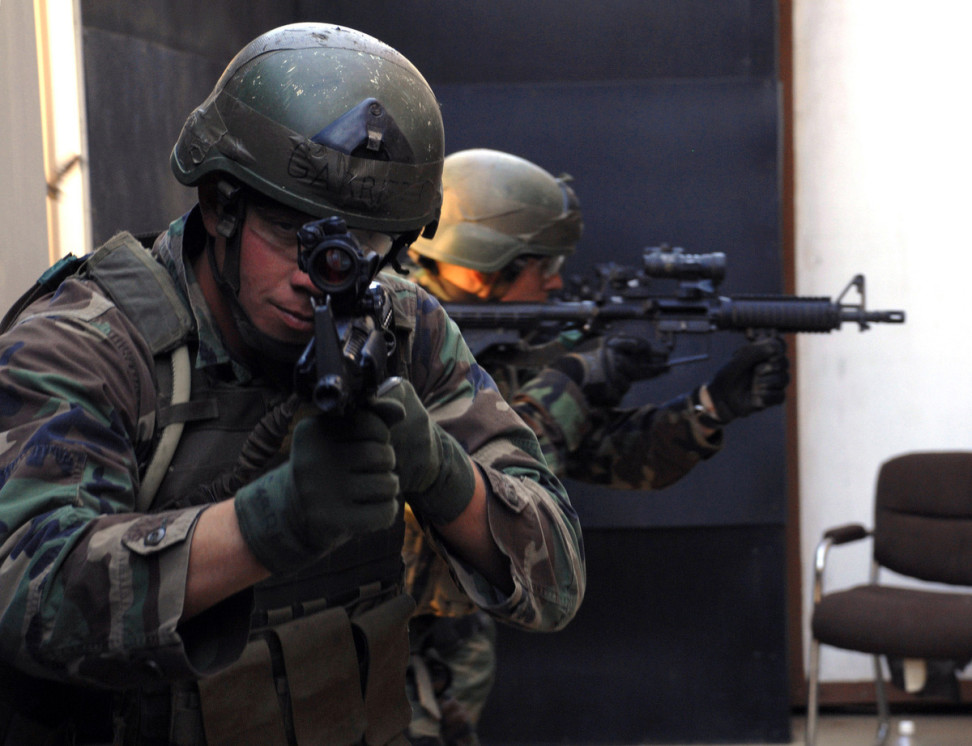With the date of his retirement approaching, US Admiral James Stavridis published an article in Foreign Policy last month. In this piece, Stavridis argues that the ‘strategic triad’ currently employed – Army, Navy, and Air Force – is insufficient to address the emerging security challenges of the 21st century. Rather, the author proposes, a new triad should be established which will enhance, or even come to replace, the traditional three branches of the United States military. These three new forces are envisioned to consist of Unmanned Aerial Vehicles (UAVs), Special Forces units, and a ‘Cyber Force’ that could not only defend American online infrastructure against cyber-terrorism or cyber-warfare but also launch cyber-attacks of its own in concert with other military branches.
This proposal is problematic for a number of reasons. The new triad envisioned by Stavridis would reflect a fundamental shift in American foreign policy toward engaging in deniable operations, promoting what could be styled ‘shadow war’. For example, when a wave of cyber-attacks paralyzed the Estonian economy in May 2007, accusations were initially levelled against the Russian government. Since then, there remains ample debate as to whether the denial-of-service attacks were perpetrated by domestic actors, non-state actors in Russia, the Russian government itself, or some other entity entirely. Given the nature of the three elements to Stavridis’ triad, the United States could initiate far more destructive attacks than those suffered by Estonia in 2007 while leaving observers uncertain as to who initiated hostilities. At the same time, the US could be regarded with even greater suspicion, accused of involvement in any conflict that might emerge in the world at any given time.
[captionpix align=”left” theme=”elegant” width=”350″ imgsrc=”http://uavs.insct.org/wp-content/uploads/2013/07/Aeryon-Scout-in-Flight.png” captiontext=”Aeryon Scout Drone In Flight.”]
Stavridis’ triad also reflects a decidedly unilateral approach to defence policy. Whereas mounting operations with the traditional strategic triad has tended to require the US to undertake at least some token efforts to gain the support of the United Nations, some other international body or a ‘coalition of the willing’, the new triad would largely discourage such entreaties. After all, one of the principal advantages of Stavridis’ triad, aside from limiting the exposure of American military personnel to the dangers of combat, is surprise. If the advantage of surprise is to be preserved, it would be less desirable for American officials to present proposals for military intervention into a particular country or region to such bodies as the UN Security Council or the North NATO Council.
As such, the proposed new strategic triad runs the risk of undermining the stability of the international system. No longer constrained by public opinion or multilateralism, the United States and other countries seeking to harness the advantages of Stavridis’ triad would be less accountable for their actions on the international stage. While this would not necessarily mean a return to the multipolar world of the early 20th century, it would contribute to a kind of Hobbesian anarchy – ‘the war of all against all’, where every other actor in the international system is to be distrusted and could very well present a security threat.
However, at the same time, it is worth noting that the new triad outlined by Stavridis seems ill-suited to the realities of contemporary military operations. A Cyber Force cannot secure international waterways. Drones cannot build schools, dig wells, or distribute humanitarian aid. Special Forces, despite their ingenuity and tenacity, cannot fight the Three Block War alone. For these and many other tasks we assign our armed forces, the capabilities of the traditional strategic triad are essential. The new triad could certainly compliment the traditional, much as it does now. But the case for the creation of new military branches and the diversion of resources from, for example an Air Force of manned aircraft to a fleet of UAVs, is not compelling.
Rather, it would be advisable for the three elements of Stavridis’ triad to remain as they are. Keeping American cyber defence capabilities under the pseudo-military supervision of the US Cyber Command and civilian intelligence services, like the National Security Agency, would prevent the US government from contributing to the militarization of cyberspace. UAVs would be best recognized as a valuable tool that cannot replace, but can certainly be harnessed by, the traditional three military branches. For example, while a useful advancement, the invention of the helicopter did not mandate the creation of a fourth branch to exclusively consist of helicopters and other aircraft making use of vertical take-off and landing technologies. Finally, the US Special Operations Command should continue to preside over the country’s Special Forces, though only insofar as these units contribute to missions that are primarily carried out abroad by the traditional triad.
In the haste to prepare for future conflicts, it is important not to over-estimate the capabilities of emerging technologies. There is a proverb that generals and admirals always prepare for the last war, and Admiral Stavridis’ article represents an effort to buck the trend. Yet if the past decade of American-led military intervention has offered any insights into the course of conflict in the 21st century, it is that state-building, counter-insurgency, and humanitarian operations will be of greater importance than the cloak-and-dagger shadow war Stavridis’ triad represents. Adapting to the new reality will require a change in how the traditional triad is utilized, not a change in the composition of the triad itself.



